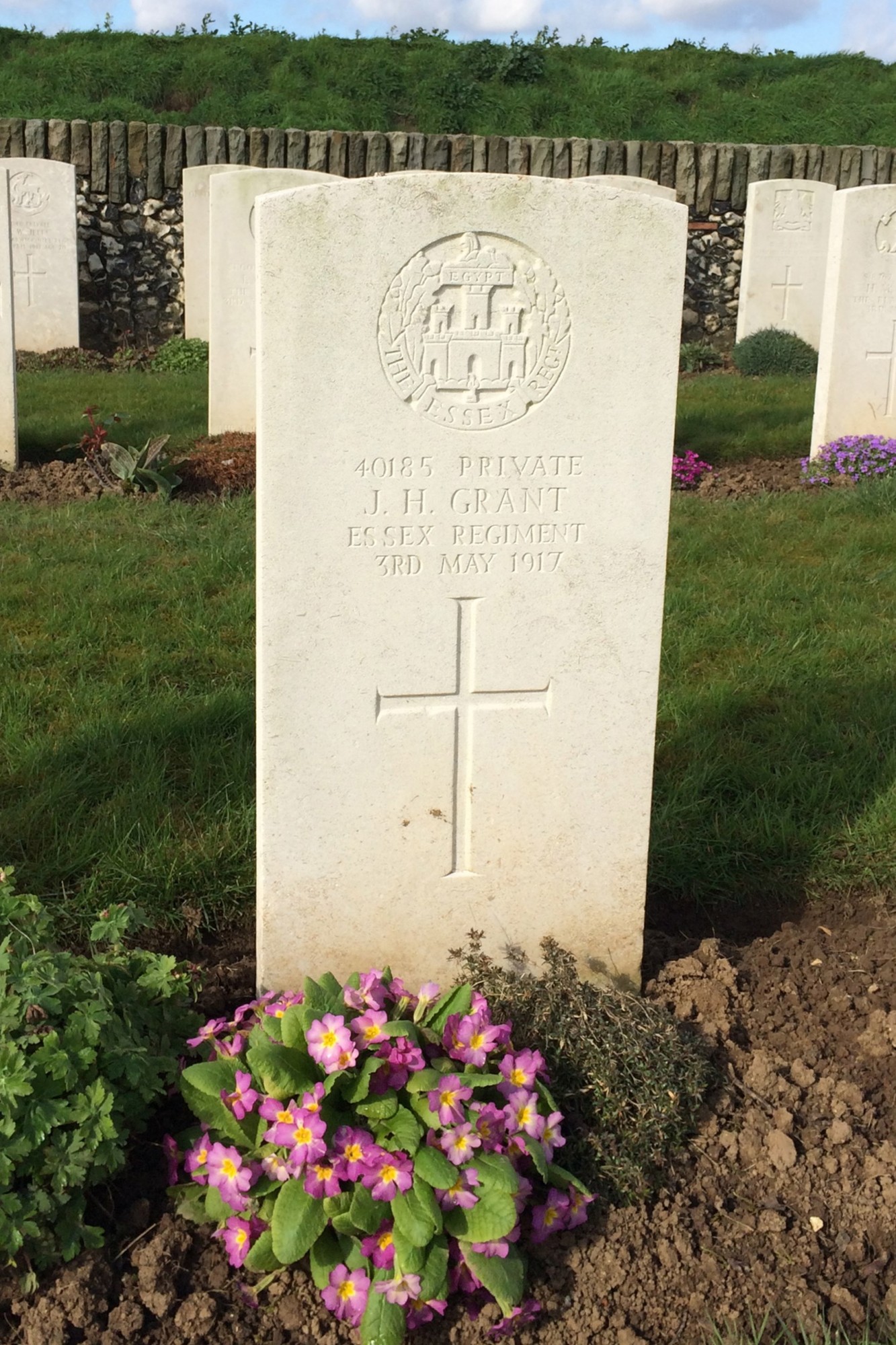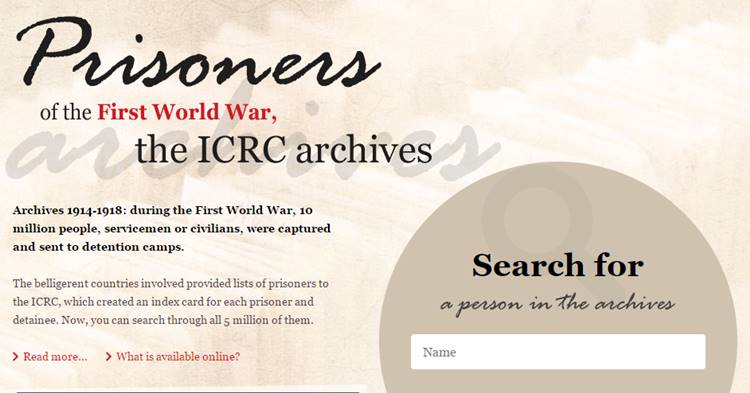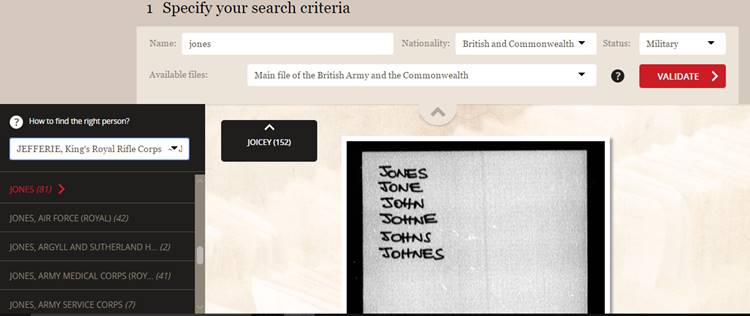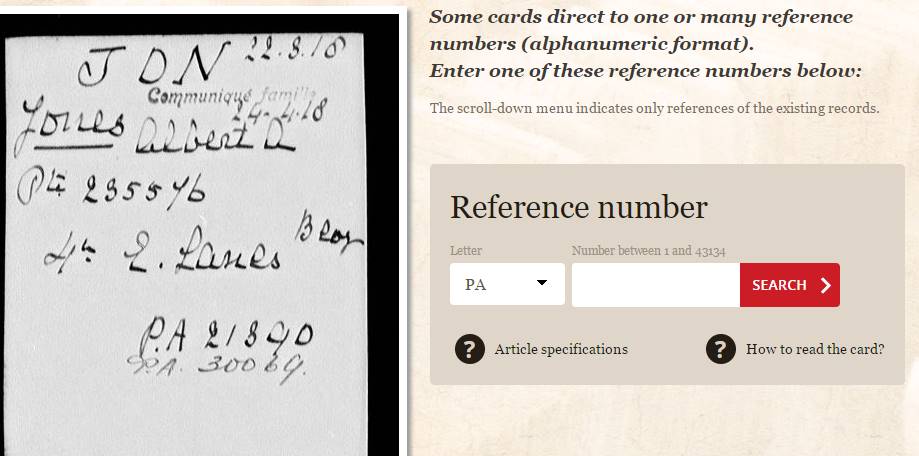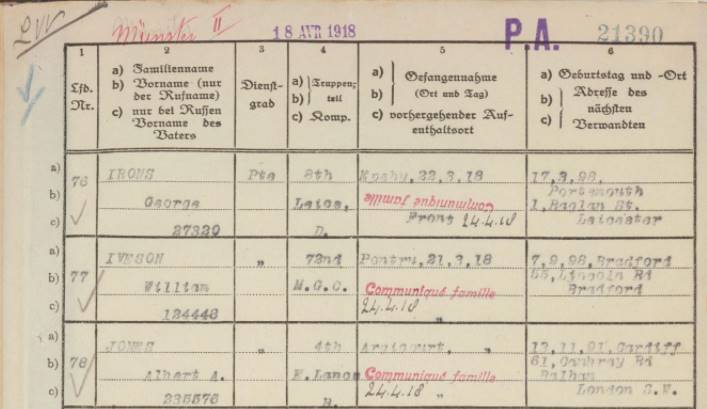This article looks at the International Red Cross prisoner of war records from the First World War which have been digitized. These records are a fantastic resource if you are researching a prisoner of war and can also be of help if you’re researching a soldier who was missing in action and later declared dead. This article is one of a series of guides I have written regarding researching soldiers:
- Guides to Researching Soldiers who served with the British Army
- Guides to Researching Soldiers who served with the Indian Army
International Red Cross Prisoner of War Records
During the First World War, millions of soldiers and civilians were taken prisoner and this article looks at their records which are held in the International Red Cross archive. The Red Cross archive contains the records of the International Prisoners of War Agency which was founded in Geneva, Switzerland in August 1914. While the archives hold records for over a dozen nationalities, this article focuses on Commonwealth prisoners from:
The Red Cross also dealt with enquiries regarding soldiers who were missing and were later found to have died. There may be documents which record letters from relatives of a soldier or even information provided by other prisoners concerning their fate. This page will take you through a step by step process to find a prisoner of war record and help you interpret the findings. Below is the grave of my great-great-uncle Private John Grant who was killed in action on 3 May 1917. He was initially reported missing and his widow, Elizabeth, sent an inquiry to the Red Cross to find out if he had been taken prisoner. John’s card reported that he was serving with the 7th Platoon of B Company of the Essex Regiment when he went missing, though not that he was with the 2nd Battalion. Elizabeth’s address was also recorded as was the fact that her enquiry wasn’t successful.
Searching for Prisoners of War
There are two options for searching the International Red Cross prisoner of war records. The easiest way is to search for the soldier is using the genealogy website Findmypast. This is a subscription website but a free trial period is usually offered. The benefit of using Findmypast is that you can search for a soldier with a regimental number if known and don’t have to navigate the Red Cross’ search results which can make it difficult to find the soldier you’re looking for. The prisoner of war records can be found in the “Prisoners Of War 1715-1945” collection on Findmypast.
If you want to search on the International Red Cross’ website, click the link below which will take you to the homepage and then follow the steps outlined below.
https://grandeguerre.icrc.org/
Once you are on the website you will see the picture below and you can search for a prisoner of war by typing their name into the search bar. I would recommend just searching the surname of the soldier you are looking for.
Now comes the tricky part! The results are not alphabetical but are sorted phonetically which means they can be a bit of a nightmare to find. For example, I was searching for a soldier named Ball for a client and while there was a section for the surname Ball, he was actually grouped under Bell. If you click the link below there is a guide from the International Committee Red Cross which provides more information on the search:
International Committee Red Cross POW Guide
Below is the page which comes up after you have searched a surname, in this example it was Jones. The card which the search selected is the first one for Jones which also contains a number of phonetically similar spellings. On the left-hand side, you will see several different units which you can select. It may take a while for you to find the soldier you are searching for.
When clicking on the units on the left-hand side new cards will be displayed in the centre of your screen. These cards will display a soldier’s name, regimental number and unit. Move your mouse over the card and a red bar will appear with “Additional Information about this person”. Click on the bar and you will be taken to a page shown below.
This is the index card for 235576 Private Albert A Jones who was serving with B Company, 4th Battalion, East Lancashire Regiment when he was captured. You will then need to enter the PA numbers into the box on the right, in this case, 21890 and then 30069. After you click search a document will appear showing the information the Red Cross holds. For Albert Jones, we can see that he was captured at “Argicourt” on 21 March 1918 and his address was recorded. Argicourt was actually Hargicourt, a village eleven miles north of Saint-Quentin. There is a ditto sign next to the misspelt Hargicourt recording that like William Iveson, the soldier above him, Albert was captured on 21 March 1918. The 4th Battalion’s war diary reported that the unit’s survivors “numbered 3 officers and about 90 other ranks” after it had been overrun on the opening day of the German Spring Offensive, compared to an establishment strength of a thousand.
You must then scroll up the page to see where he was held, though in this example the POW camp was recorded on this page as Munster II. However, not all pages will have this recorded. If you look at the left-hand column you will see that Albert was number 78 in the list. You will usually need to scroll up to the top of the list to find out where a soldier was held. The prisoner of war camp recorded is not necessarily the camp the prisoner was held in for the duration of their imprisonment.
Using the International Red Cross POW Records in your Research
The Red Cross’ prisoner of war records are often a great help in researching a soldier as they contain information which you often don’t find elsewhere. This is particularly the case for soldiers whose service records were lost in the Blitz. As well as a date and place of capture, the company or squadron a soldier was serving in was often reported as well as the unit e.g. the 5th Battalion The Essex Regiment, 149th Machine Gun Company etc. You can then turn to a unit’s war diary to find out more regarding the circumstances of the soldier’s capture. A war diary was written by an officer of a unit and they often mention the activities of individual companies. Another important piece of information is their address, address of next of kin (not always recorded) and date of birth. This will allow you to rule out soldiers if you’re searching for someone with a common name e.g. George Smith. The German prisoner of war lists will record where the soldier was held, allowing you to research the correct prisoner of war camps.
Once you learn a soldier went missing, you can turn to their local newspapers to see if they carried a report. For a soldier who was taken prisoner of war, there may be three reports in local papers. The first for when they went missing, the second for when they were confirmed as a prisoner of war and the third for when they were repatriated. Everything will depend on how detailed the local paper was. I’ve written an article on how to search local newspapers. If the soldier was later confirmed to be killed, then there could be a report of them going missing and the later confirmation of their death.

